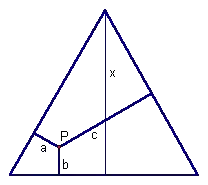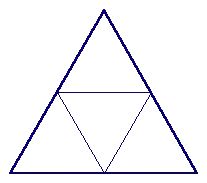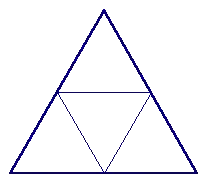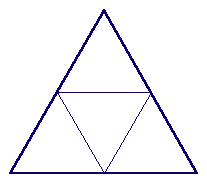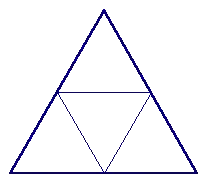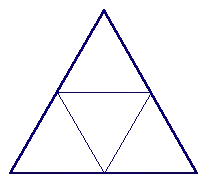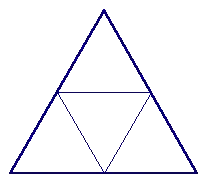This still doesn't answer the question asked, but is getting too long for comments.
Here's an argument that the probability is always $\frac{1}{4}$ as long as the arena is centrally symmetric about the center point. Especially this is the case for a circle, a square, and all even-sided regular polygons:
As Didier noticed, only the directions from the center to each of the three points matter. The triangle they form contains the center iff their projections along radii to a (concentric) circle divides the circle's perimeter in three pieces each of which is less than 180°.
Draw a vertical diameter through the center point. Due to the central symmetry, any of the three points has equal probability to land left or right of the diameter. If all three of them are to the same side of the diameter (which happens with probability $\frac{1}{4}$), the center clearly isn't in the triangle. So we need only to analyze the situation, with probability $\frac{3}{4}$, that two of them are on one side and one on the other. Let's say, without loss of generality, that there is one to the left and two to the right.
Now, if we take the line through the center of the left point and continue it through the right side of the arena, we win if this line passes between the two right points. Also, since the arena is centrally symmetric, we might as well have chosen the left point by picking its reflection uniformly on the right. So the case is equivalent to picking two red points and one blue one on the right side uniformly on the right side of the arena and then asking whether the blue is between the reds. Since these points are i.i.d., the exact form of the distributions doesn't matter for their relative order, and so the probability of success here is $\frac{1}{3}$.
In total, the probability of the triangle containing the center is $\frac{3}{4}\times\frac{1}{3}=\frac{1}{4}$ -- as long as the arena is centrally symmetric!
What implications does this have for the triangular arena? We can still find a diameter that bisects the arena, but the idea of choosing all three points to the right and then reflecting one doesn't work anymore. In fact, heuristically, the more the red and blue distributions (of directions) differ, the less ought the probability of having the blue point end up in the middle to be. So we should expect a proability less than $\frac{1}{4}$ in the triangular case.
By continuity, odd regular polygons with many sides will give answers that approach $\frac{1}{4}$, so we should expect the triangle to be the odd-sided regular polygon with the least probability to have a random triangle contain the center.
By dividing the equilateral triangle in six congruent 30-60-90 triangles and counting combinations, I have found that the probability is $\frac{2}{9}$ plus $\frac{1}{12}$ of the probability in the case where two points are in one of the hexants and the third is in the diametrically opposite one. Further subdivision into symmetric sub-cases shows the latter probability to be between $\frac{1}{6}$ and $\frac{2}{3}$. So we have the lower bound $$P>\frac{2}{9}+\frac{1}{12}\times\frac{1}{6}=\frac{17}{72}=\frac{1}{4}-\frac{1}{72}\approx 0.2361$$


